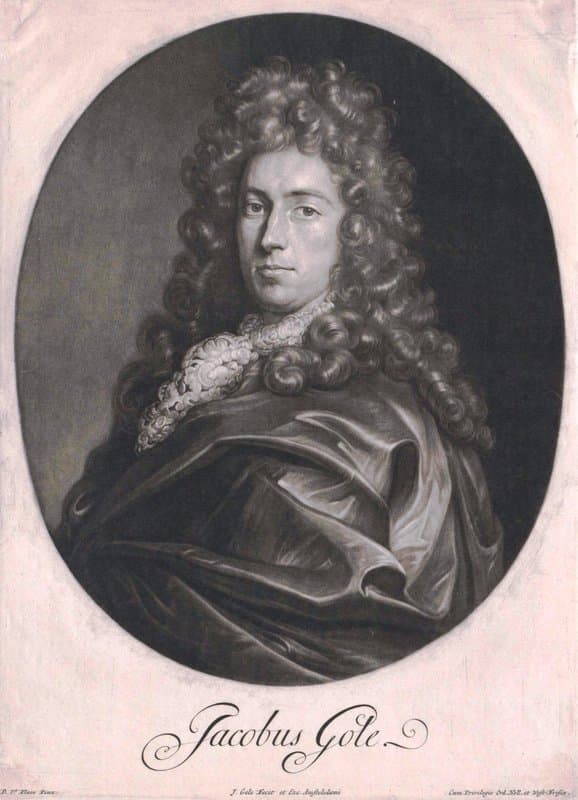Loading...

1660–1737
Occupations
Jacob Gole (1660-1724) was a Dutch engraver, mezzotinter, and printmaker renowned for his portrait engravings and his role in disseminating the mezzotint technique across Europe. Born in Paris to the celebrated Huguenot cabinetmaker Pierre Gole, he emerged as one of the most skilled printmakers of the late Dutch Golden Age, bridging French craftsmanship heritage with Dutch artistic innovation. Gole's significance in art history lies primarily in his mastery of the mezzotint technique and his instrumental role in spreading this sophisticated printmaking method from Amsterdam to London. As part of a wave of Dutch mezzotint engravers including Abraham Blooteling, Jan van Somer, Pieter Schenk, and Gerard Valck, Gole helped establish mezzotint as the premier technique for portrait reproduction in late seventeenth-century Europe. His portraits of influential figures—including Pope Innocent XI, Louis XIV, Rembrandt, Gilbert Burnet, and numerous Protestant reformers—served both artistic and documentary functions, preserving the likenesses of key historical personalities for posterity. Born into a family of Huguenot refugees who fled France following religious persecution, Gole settled in Amsterdam around 1684, shortly before the revocation of the Edict of Nantes. When he posted marriage banns in Amsterdam on June 17, 1701, he declared himself thirty-five years old, confirming his birth around 1665. That year he married Jeanne Halloij, establishing himself as a professional engraver and publisher. While biographical sources sometimes identify him as a pupil of the genre painter Cornelis Dusart, he more accurately worked as an engraver reproducing Dusart's compositions, including notable works like "La Hollandoise sur les patins" (The Dutch Woman on Skates). His first signed engraving dates from 1685, marking the beginning of a productive four-decade career. Gole's technical prowess encompassed both line engraving and mezzotint, though he excelled particularly in the latter. The mezzotint process, requiring meticulous preparation of copperplates with a specialized rocker tool to create tonal gradations, allowed Gole to achieve subtle shadow effects and rich tonal variations ideal for portraiture. His prints demonstrated exceptional skill in rendering textures, capturing facial features with remarkable fidelity, and creating atmospheric depth. Beyond portraits, he produced ornamental prints, genre scenes, allegorical compositions, and fashion plates, while also operating as a publisher of playing cards. Gole's legacy extends beyond his individual artistic achievement. By sharing mezzotint knowledge with British publishers and artists, he contributed to London's emergence as the dominant center for mezzotint production by the mid-eighteenth century. The Rijksmuseum and National Portrait Gallery hold substantial collections of his work, testament to his enduring importance in European printmaking history. He died in Amsterdam in January 1724, leaving behind a body of work that documented an era while advancing the technical possibilities of reproductive printmaking.
Artist Overview Writer Agent
Last updated: January 2025
Biography length: ~456 words
Wikidata/Wikimedia Commons